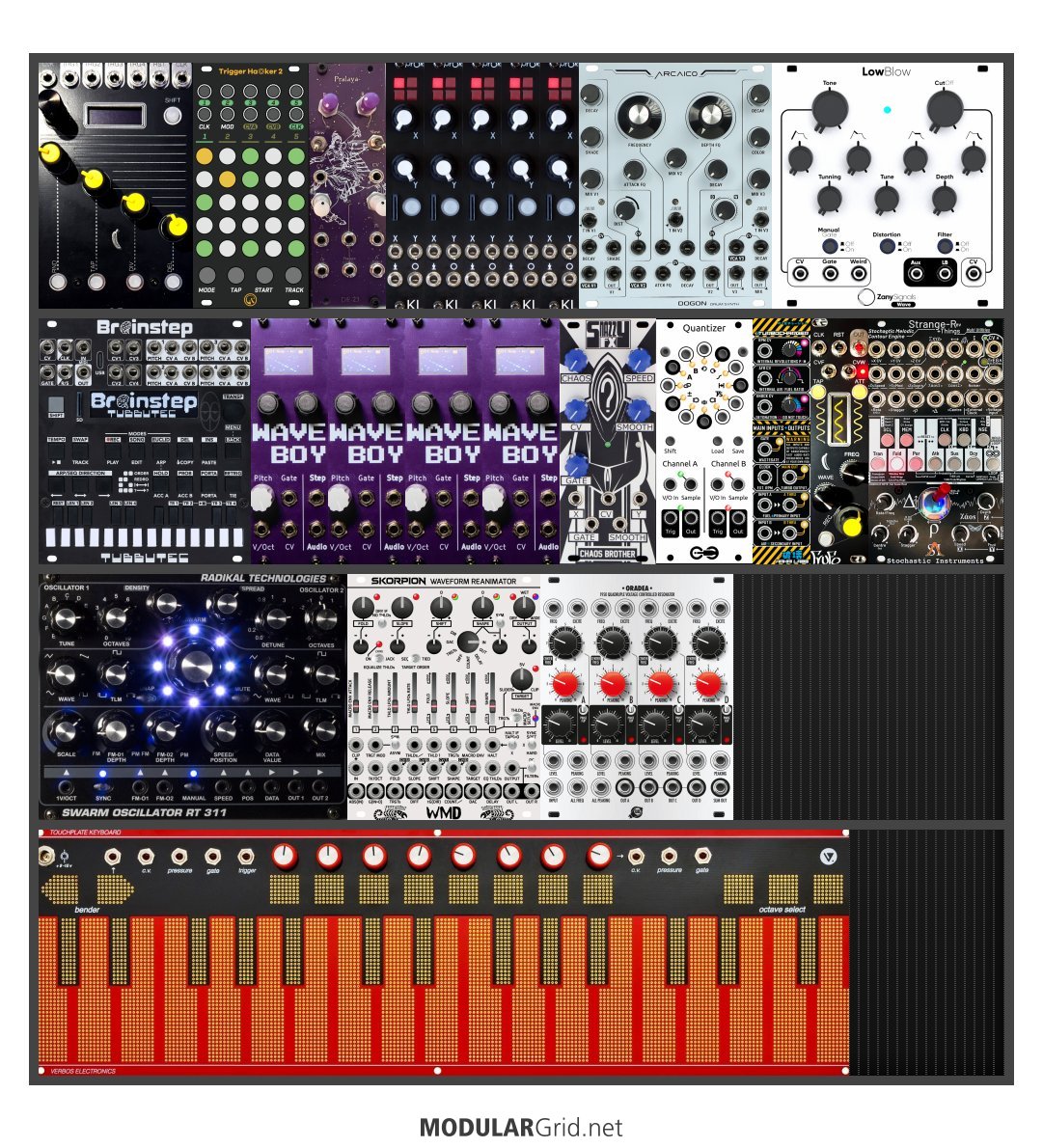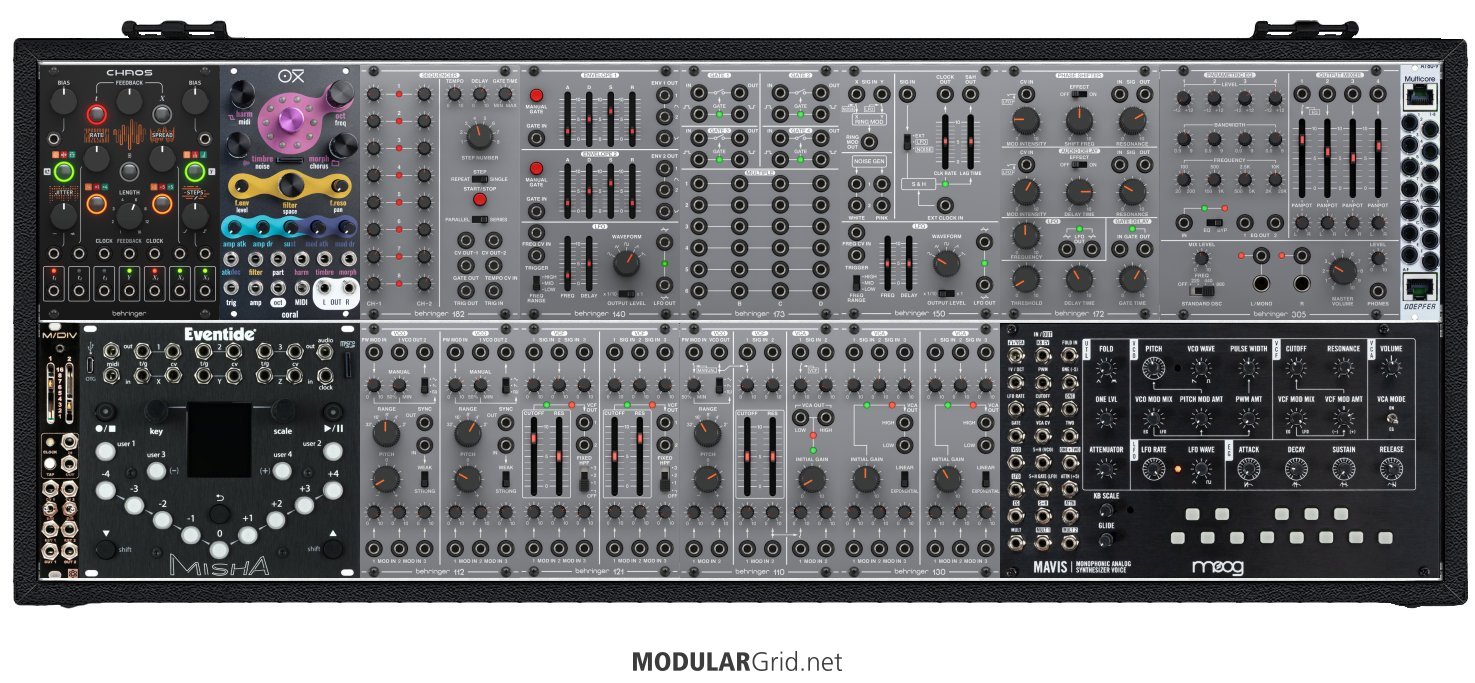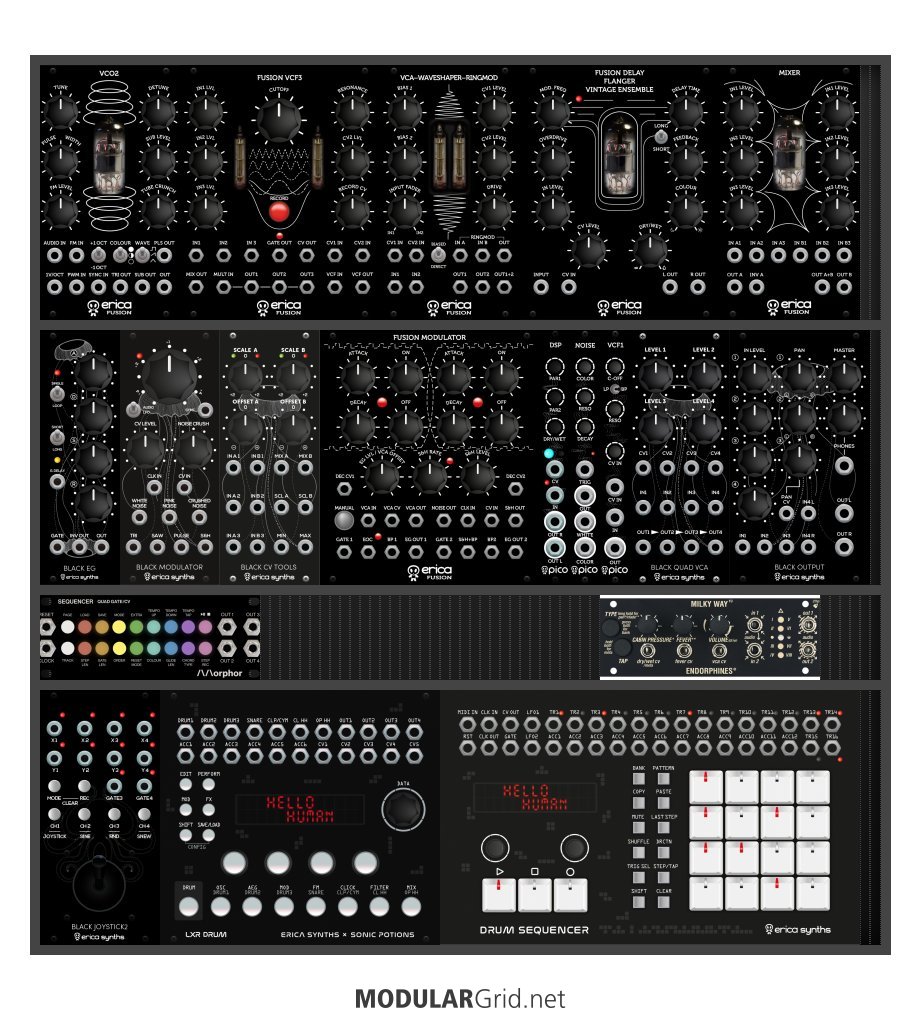Bohm OhmForce Minimal Techno
TECHNORACK V2
Hi everyone,
Here’s a new live performance with my updated Eurorack setup, still dedicated to Techno. This time I went a bit more minimal: I lowered the BPM because the Bohm has a longer pitch envelope than expected. Slowing it down helped me get those nice harmonics with a properly tuned kick. In the end, the Stolperbeats could open up more groove and complexity, and the result feels deeper and more hypnotic.
The Intellijel Multigrain is the main atmosphere/melody source, sequenced by the Tiptop Z8000 and Pamela’s New Workout. Long saturated sequences go into the Sealegs, with a hi-hat texture layered on top.
The Z8000 also sequences part of the Rample, with the Voltage Block switching samples and patterns on the fly, synced with the Stolperbeats. I love how a single preset change can reshape the groove instantly.
For mixing, I created two separate chains:
• D.O.MIXX + Per4mer + Golden Master
• Quadratt → 100 Grit → FX AID
This gives me two distinct layers: one easy to play live, and another I can remix later after recording.
I’m also using the Ikarie to create unique wah-wah effects on a kick and some Rample layers.
The Bohm itself is still a new territory for me. Some engines don’t interest me much, but below 140 BPM it’s a beast — long envelopes, punchy attack, and a lot of potential for evolving kicks. Curious to explore it more in the future.
Thanks a lot for listening, sharing and for your feedback 🙏
⸻
🎛 Modules used
🔊 Sound sources & voices
• OhmForce Bohm – Multi-engine kick generator
• OhmForce Performer – Left expander
• OhmForce Groove – Right expander
• Intellijel Multigrain – Morphing stereo granular sampler
• Squarp Instruments Rample – 4-voice sample player & processor
🎚 Sequencing & modulation
• Tiptop Audio Z8000 (black) – Matrix sequencer / programmer
• ALM Pamela’s New Workout + Pexp-1 – Advanced clock & modulation expander
• Malekko Voltage Block – 8-channel CV sequencer with presets
• Making Sound Machines Stolperbeats – Off-grid drum sequencer with swing
• Intellijel Quadratt 1U – Quad attenuator, attenuverter, CV source
• Intellijel FSR 1U (x4) – Pressure-sensitive touch controllers
🌀 Filters & distortion
• Bastl Instruments Ikarie – Stereo / dual-peak filter
• Schlappi Engineering 100 Grit – Filter, VCA & distortion with brass touchpoints
• Ritual Electronics Guillotine – Stereo heavy clipping distortion
🎚 Mixing & effects
• Blood Cells Audio D.O.MIXX – 5-channel mixer with direct outs
• Modbap Modular Per4mer – Quad performance FX
• Happy Nerding FX AID (black) – Multi-effects
• Intellijel Sealegs – Stereo character delay with reverb
• Endorphin.es Golden Master 1U – Multiband EQ, compressor & mid/side
• Cosmotronic Messor – Stereo compressor & transient shaper
• Intellijel Stereo Mixer 1U (x2) – Chainable mono/stereo utility mixers
• Doepfer A-138i – Interrupting mixer
🔗 Utilities & summing
• Frap Tools 333 – Pro audio summing & distribution
• Rides in the Storm CON – Quad gain converter
• ALM Tangle Quartet – Quad linear VCA
⸻
🔖 Hashtags
eurorack #modularsynth #eurorackmodular #eurorackcommunity #euroracksetup
ohmforce #bohm #synthcommunity #euroracktechno #techno #minimaltechno #140bpm
squarprample #stolperbeats #tiptopz8000 #intellijel #sealegs #multigrain
schlappiengineering #bloodcellsaudio #endomorphines #happynerding #bastlikarie
cosmotronic #fraptools #malekko #modbap #ritualelectronics #ridesinthestorm








